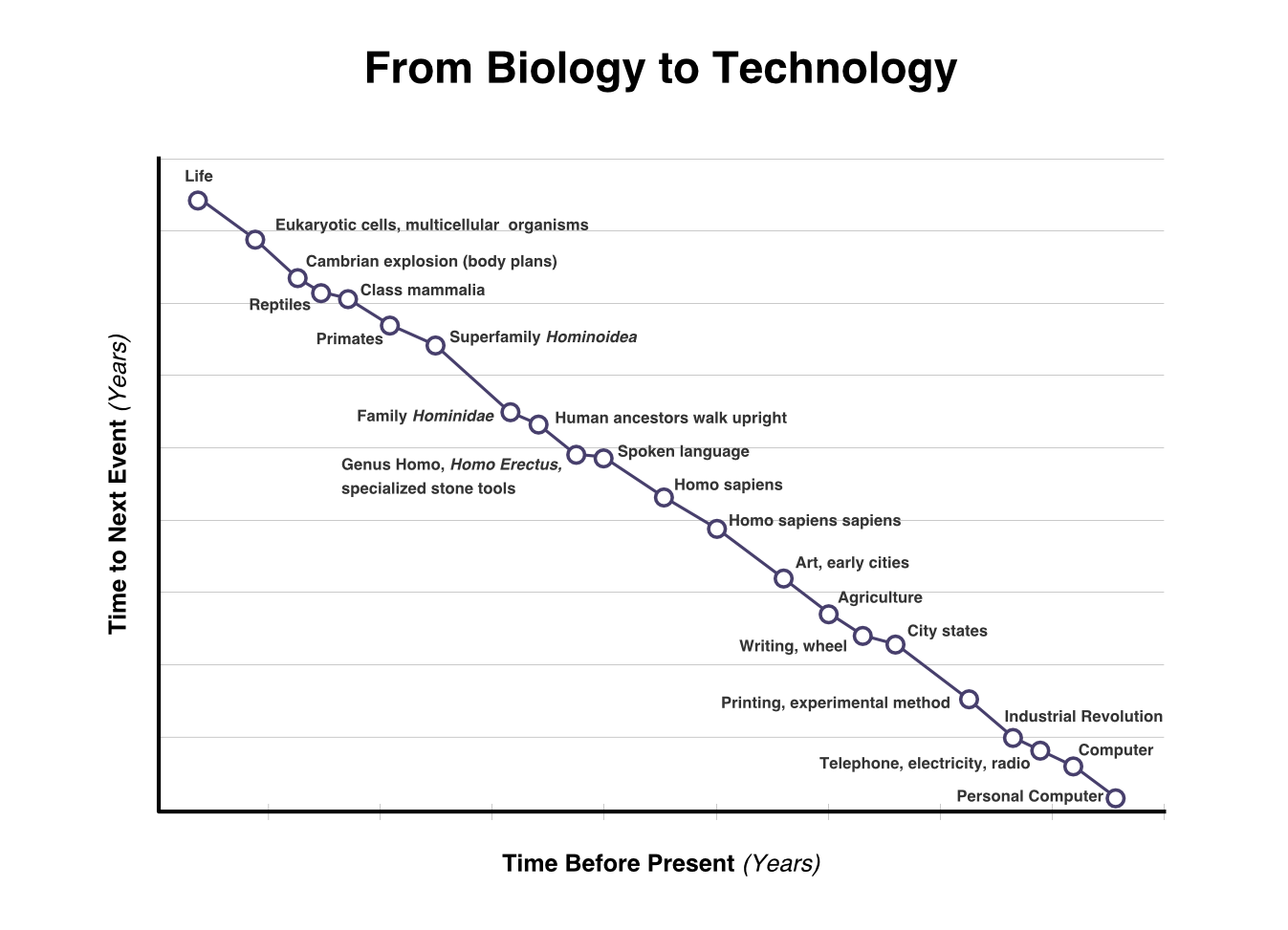The world around us is changing fast, and the effect on the electronic Supply Chain is no exception. Companies that are winning today are not doing what their predecessors did 10 years ago. Given that things are moving faster, supply chain companies are in a race to ensure business processes allow for more efficiency in less time. In Acceleration of Everything, we’ll explore how to stay on top of market conditions and make better tactical and strategic decisions by adopting digital platforms that analyze real market data to increase bargaining power.
The ‘acceleration of everything’ concept has captured my interest for nearly two decades, and yet it’s been happening before our eyes for billions of years. The idea revolves around the thought that the entire universe was compressed to a quantum dot, that is until the Big Bang expanded the potential for continuous change.
Ray Kurzweil, renowned American author, inventor, futurist, and a director of engineering at Google, describes the accelerating power of technology to explain how technology is actually accelerating much like how we are evolving. Trends in technology evolution are similar to biological evolution, whereby they both have the same drive towards ubiquity, diversity, complexity, and are similar evolutionary processes where the information processing tools of prior generations are used in the development of the “next”. In other words, today’s best tools help us build even better tools for tomorrow, fueling this acceleration.
The evolutionary process of technology, much like biology, decreases adoption times from one invention to the next. Because of this, Ray believes we’re doubling the paradigm shift rate – the rate of technical progress every decade. For instance, the Printing Press took a century to be adopted, the telephone took 50 years, and adoption of the PC and internet dwindled down to under a decade.
The graph below shows how the time between milestones of evolutionary advances in biology and technology decrease over time, leading to a continuous trend of acceleration.
 According to Ray Kurzweil, biology and technology are evolutionary processes in which the information processing tools of prior generations are used to make those of the next. As these improve, the time between advances in order and capability decreases exponentially. In this chart, Kurzweil gathered and plotted historical milestones in biology and technology. He writes “There is a clear trend of smooth acceleration through biological then technological evolution.”
According to Ray Kurzweil, biology and technology are evolutionary processes in which the information processing tools of prior generations are used to make those of the next. As these improve, the time between advances in order and capability decreases exponentially. In this chart, Kurzweil gathered and plotted historical milestones in biology and technology. He writes “There is a clear trend of smooth acceleration through biological then technological evolution.”
Source: The Singularity is Near/Singularity.com
The evolutionary path gets summed up by Moore’s law, which observes that the number of transistors in a dense integrated circuit doubles about every two years. Moore’s law is a projection of a historical trend. Rather than a law of physics, it is an empirical relationship linked to gains from experience in production. The decreasing price of sequencing the human genome is a clear example of non-linear progress.
Technology is getting smaller, more powerful, and more intimate with us, doubling the power of computation for the same price now every year. The pace of software evolution is no exception. Leveraging powerful technology developments, along with machine learning and AI, set out to solve complex problems, especially for supply chains.
In our next blog, we’ll explore how this concept applies to the supply chain, how COVID-19 flipped the supply chain world on its head, and what the supply chain of the future looks like. Or click here to read our full report on the Acceleration of Everything.



